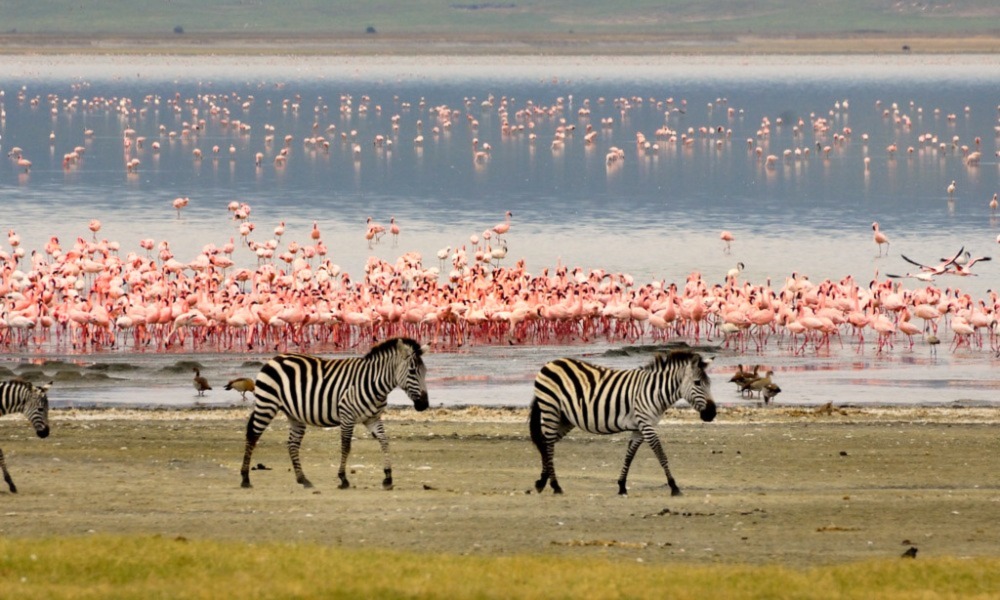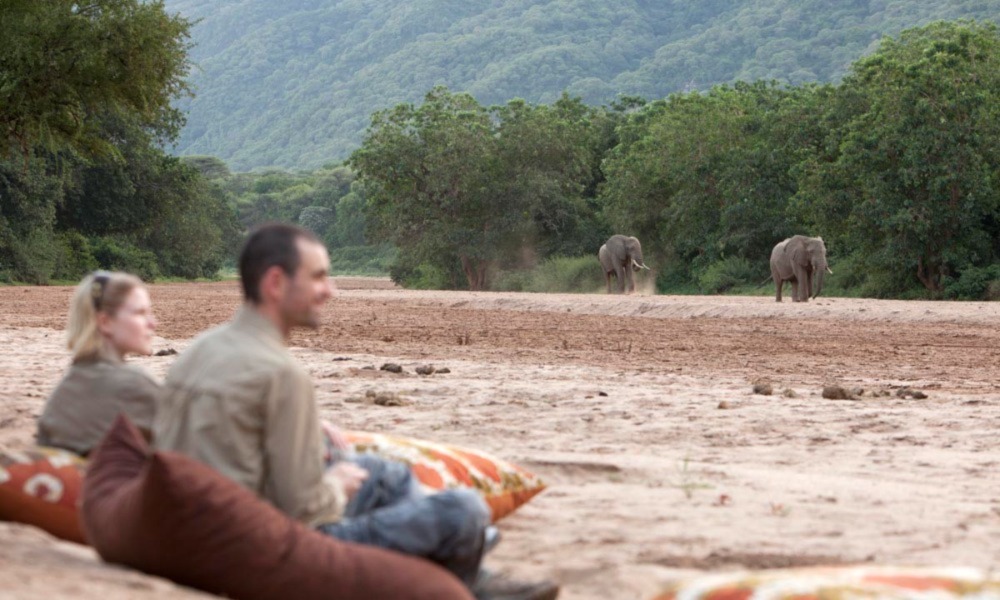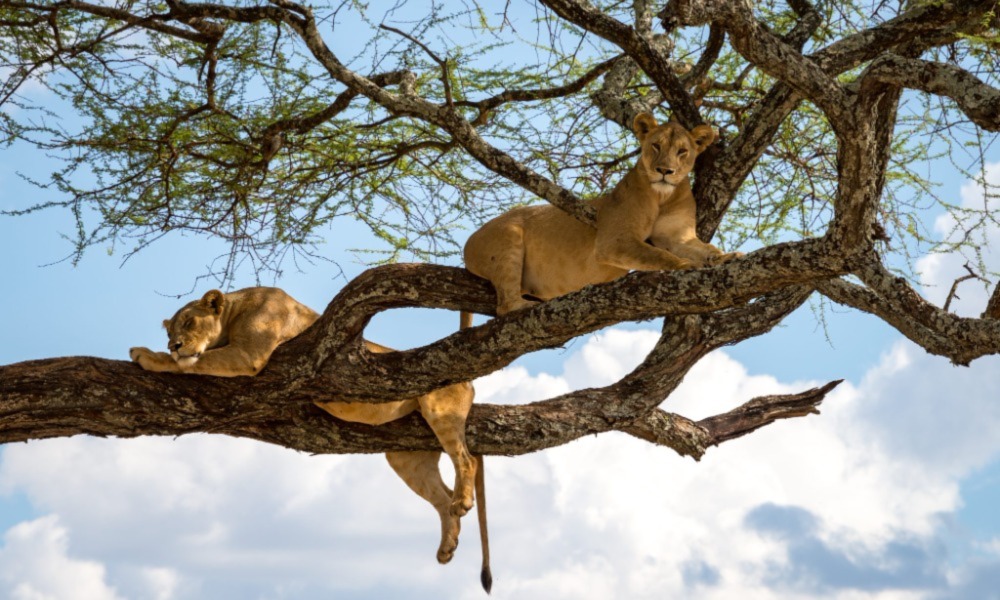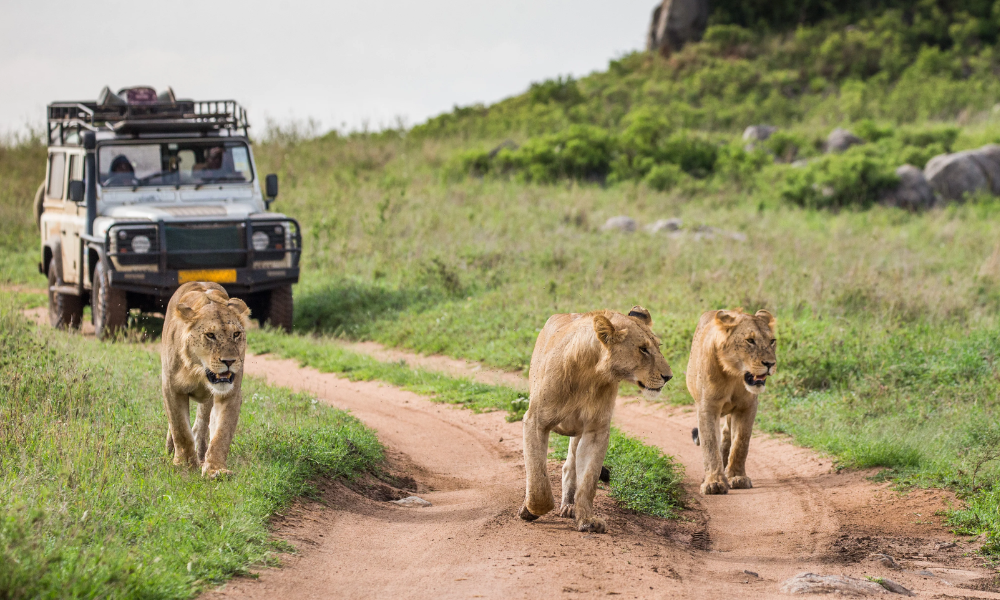
Written By

Colourful pink flamingos, tree-climbing kings, and a whole lot of unique residents make up the Lake Manyara National Park Safaris highlights. Despite the relatively smaller size of the park, wildlife diversity isn’t affected one bit! Sausage trees come alive with primates, elephants feed on fallen fruits, and leopards and baboons call the forested area of the park home.
This read-through will explore all the wildlife residents you will likely see on Lake Manyara National Park Safaris. Moreover, we’re also going to explore the environmental initiatives that have been set up in the park (this is something that not everyone focuses on, so don’t miss out on this golden insight opportunity). Thus, let’s get started!

Do you know why Lake Manyara National Park Safaris showcase so much wildlife diversity in such a small area? The answer is simple – the rich varied habitats. These consist of a soda lake, equatorial forests, mountain slopes, acacia woodlands, and several kinds of savannahs. This provides a home to several wildlife species.
Below is an exploration of the major Lake Manyara Wildlife highlights:
As you approach the shores of Lake Manyara, a mesmerizing panorama unfolds before your eyes. An array of pink hues cover the waters, transforming the tranquil scene into a living and breathing painting.
But what brings these majestic birds to Lake Manyara National Park? It’s all about the feast that lies beneath the surface. The lake’s alkaline waters serve as a source of nourishment for these elegant residents.
Brine shrimp and algae thrive in these conditions, providing a feast for the flamingos. With their specialized beaks, they filter-feed and effortlessly extract their nourishment from the rich waters, their vibrant plumage standing out in contrast against the pale background.

Picture this – A vast savannah stretches as far as the eye can see, dotted with acacia trees and lush vegetation. Amidst this picturesque setting, an astonishing sight awaits. The perception of tree-climbing lions sparks curiosity to delve deeper into their remarkable behaviour.
What drives these lions to defy their terrestrial nature and become skilled climbers? Even seasoned scientists can’t come to an exact conclusion! Though some have suggested that it may be to escape the tsetse flies or get a better vantage point for prey.
Resident Lake Manyara Animals species include cape buffaloes, bushbucks, warthogs, and waterbucks. Moreover, predatory species like black-backed jackals, hyenas, lions, cheetahs, and leopards can be seen in grassland habitats.
During the dry season of Lake Manyara, the waters of the eponymous lake transform into grassy floodplains. Then, large migrating herds of wildebeests, zebras, and gazelles enter the park for a short period. Only a small resident population of these Lake Manyara National Park Animals remain through the wet season.
You may also be surprised to hear that you can spot several water-based wildlife species during a Lake Manyara Safari Tour. This includes Egyptian mongooses, Cape clawless otters, crabs, and several species of fish.
The evergreen canopy of the park is a habitat for hornbills, Skyes’ monkeys, and short-eared Galagos that jump between the branches of trees at night. Tall trees are also perches and roost sites for over 30 birds of prey. This includes African hawk eagles, crowned eagles, Ayre’s hawk eagles, pal-nut vultures, etc.
Lake Manyara National Park Safaris also offer the chance to spot the world’s largest population of baboons. Almost guaranteed sightings are to be expected between the trees where they forage for food.
Furthermore, acacia leaves on the forest floors are the main source of food for elephants and Masai giraffes.
Rocky Escarpment Animals Tiny Kirk’s dik-dik and klipspringer (a rock-jumping antelope) call the rocky escarpment floor of Lake Manyara home. So, don’t forget to visit the western region of the park when on Lake Manyara National Park Tours.

Lake Manyara National Park exemplifies a proactive approach to conservation and environmental initiatives. By implementing strict anti-poaching measures and leveraging modern technologies, the park protects its diverse wildlife from illegal hunting activities.
Educational programs and community outreach initiatives raise awareness about the park’s biodiversity and foster a sense of responsibility towards environmental conservation. Lake Manyara National Park Tours serve as a shining example of successful conservation endeavours, emphasizing the importance of preserving our natural treasures for future generations.
By and large, Lake Manyara National Park offers an extraordinary safari experience, showcasing a diverse range of wildlife encounters. From the graceful presence of flamingos adorning the lake’s shores to the enigmatic tree-climbing lions perched atop ancient trees, the park never fails to entice visitors.
Lake Manyara National Park Safaris through remarkable landscapes and captivating wildlife is an invitation to appreciate the wonders of nature and cherish the importance of protecting these precious treasures for generations to come.